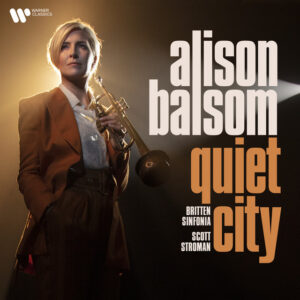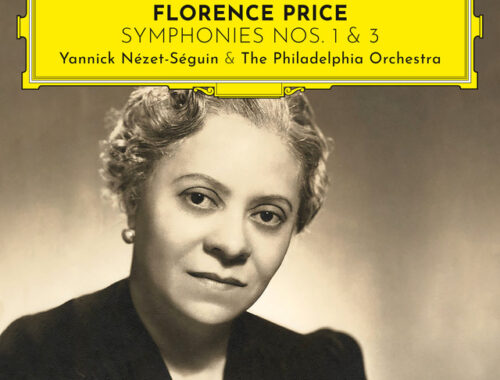GRAMOPHONE Review: QUIET CITY – Balsom, Britten Sinfonia/Stroman
 There’s something intensely evocative about the solo trumpet – a plaintive, plangent, melancholic sound which speaks just as eloquently of the great outdoors as it does of the inner city. Of course, the jazz connotations are inescapable when the hour is late and mood is blue – and if ever a piece or indeed a solo part were to be the envy of a player like Alison Balsom then it would surely be Gershwin’s small but mighty exercise in fusion Rhapsody in Blue. But it’s Gershwin’s hands on those piano keys and the Paul Whiteman Band’s principal clarinettist turning a tremulous run into an oily glissando that defines it from bar one.
There’s something intensely evocative about the solo trumpet – a plaintive, plangent, melancholic sound which speaks just as eloquently of the great outdoors as it does of the inner city. Of course, the jazz connotations are inescapable when the hour is late and mood is blue – and if ever a piece or indeed a solo part were to be the envy of a player like Alison Balsom then it would surely be Gershwin’s small but mighty exercise in fusion Rhapsody in Blue. But it’s Gershwin’s hands on those piano keys and the Paul Whiteman Band’s principal clarinettist turning a tremulous run into an oily glissando that defines it from bar one.
Not here. Simon Wright’s arrangement of Gershwin’s much-loved ground-breaker is the centrepiece of this Stateside collection and, you guessed it, it is Balsom who invites us in with that insane glissando. Risky. The clarinet is iconic in this piece, as is the now flashy, now ruminating, piano part which Tom Poster here finds himself sharing with the star of this show. Indeed, there are moments when I swear I can hear Poster’s inner voice muttering: ‘move over Alison and leave it to me’ because as smart and quirky as Wright’s arrangement is, I did find myself thrown by the split-focus between its two principal voices especially where they are sharing or vying for attention on the solo line. Generally, the mix of colours and timbres feels slightly confusing, over-complicated. You mess with a classic (and one with such a distinct sound world) at your peril – though I would say that the blue tune’s sepia quality is none the worse for being trumpet-toned.
So that’s the only thing that doesn’t quite come home for me in this collection. Copland’s Quiet City – most beautifully realised by Balsom and Nicholas Daniel (cor anglais) and the Britten Sinfonia – is a magic casement opening on to a dreamy nocturnal world of deserted streets and Edward Hopperesque bars and, as it happens, a close cousin of Charles Ives’ The Unanswered Question which behaves like the philosophical subtext of Copland’s piece. In the Pas de deux ‘Lonely Town’ from Leonard Bernstein’s first Broadway musical On the Town loneliness begets rapture and Balsom’s own arrangement really hits the spot.
To say that Balsom is in touch with the soul of her instrument would be to downplay her artistry. And, as I say, there are things she does technically here which feel so effortless that we her listeners can just relax into the phrasemaking like it’s something she’s made up on the spot. That, of course, is the essence of an in-the-moment jazzer and I was delighted that she chose to include two telling tributes to the great Miles Davis.
The central movement of Rodrigo’s ubiquitous Concierto de Aranjuez was a tune that proved irresistible for Davis featuring on his classic album Sketches of Spain in a two-part arrangement by Gil Evans which loses itself in the sultry heat of that tune to such an extent that the whole thing doesn’t sound written out at all. The tune’s passionate return in the second section Moderato really turns up the heat – a radiant, thrilling apotheosis with those edgy jazz harmonies.
But the quiet culmination of the album is perhaps the most enduring selection of all: Gil Evans’ arrangement – again for Miles Davis – of Kurt Weill’s ‘My Ship’ (from Lady in the Dark) where the ache of the tune sits so well for the instrument and the words of the song (and all its innate yearning) are somehow implicit in the sound.
You May Also Like

A Conversation With VICTORIA WOOD: New TV drama, ‘Loving Miss Hatto’
21/04/2016
GRAMOPHONE Review: Brahms Double Concerto / Viotti Violin Concerto No 22 / Dvořák Silent Woods – Christian & Tanja Tetzlaff, Deutsches SO Berlin/Järvi
15/12/2023

